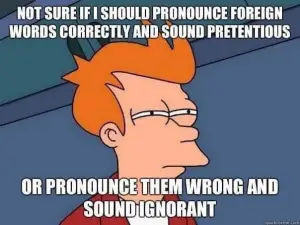
Translation theories and thoughts
We could think of the translator as an extension of the author’s brain, giving access to an additional system of thoughts that we call a language - somehow like a new instrument or plugin (if you’re here because of music, you’ll understand my point!) offering you a new or advanced range of expression, or like a new matrix helping you solve an equation; the unknown (the message) was there from the start but needed a mean to be expressed. I see Language as a mean of expression and of communication: in translation, this communication is usually unidirectional with the addresser (author) sending a message to the addressee (reader), while in interpreting it can be multidirectional with the interpreter as the messenger of the different speakers. Then come the words, as little tools at the service of this language, used by the translator or interpreter just like the author does if speaking the target language (that’s at least the aim!). So if you’ve followed my train of thoughts, words do not define the language, they support it. When you speak or write, you use more than words and their intrinsic / isolated meaning: in an uttered speech, you also convey ideas with your intonation, tone and pitch, register, pauses and silences; in a text, you say a lot with your literary style, syntax, punctuation. Just like in music, silence is highly important, and it fills the space even in a song where you hear no pause or in a text where you see no line break.
I came across one day (or rather one night…) an article by Danica Seleskovitch (1985) and couldn’t help but smile when reading the first page. She found the right words to explain concepts that I always try to clarify to people, without finding a formulation as precise as hers. I would talk about meaning beyond words, reality seen without the words, language acquisition, cultural influences and varied and variable uses of the language in different sociocultural contexts and backgrounds, with thousands of examples, while Danica had said it all in two sentences (pp. 19-24):
‘We can understand the process of translation in a general sense only if we understand the process of emission and receipt of speaking, and if we admit that all speaking is turned into thought for one who receives it, and it is indeed that though which the translators conveys and not the source language’s semantics or syntax.
(...)
Interpreting is practised by good interpreters not as an operation on languages, but as an operation on what is said through language; to them, it means “understanding and explaining”, and not converting a language into another.’
‘Translation: An incredibly broad notion which can be understood in many different ways. For example, one may talk of translation as a process or a product, and identify such sub-types as literary translation, technical translation, subtitling and machine translation; moreover, while more typically it just refers to the transfer of written texts, the term sometimes also includes interpreting.’
Shuttleworth and Cowie (1997) Dictionary of Translation Studies.
Translating is a discipline that has a long history of theories and concepts; after a shift from word for word literal translation, to meaning-focused translation, we can consider various approaches and methods. In my own translation process, I follow the below rules:
1. The Skopos rule (primary rule): the purpose of the translation determines the goal of the translation action. It states that translation, as a subcategory of human action, is determined by its purpose (skopos).
2. The coherence rule: stipulates that the TT must be sufficiently coherent in itself to allow the intended users to comprehend it, given their assumed background knowledge and situational circumstances.
3. The fidelity rule: concerns intertextual coherence between ST and TT and stipulates that some relationship must remain between the two once the overriding principle of skopos and the rule of intertextual coherence have been satisfied.
Your content has a specific purpose, context, audience, and message. Its translation will share those elements or have its own; let's talk about your project and the result will correspond to your expectations and to your audience's!
“Localization involves adapting a product or service to meet the language, cultural, and other specific requirements of a particular country or region. Localization includes linguistic changes as well as modifications to graphics and user interface, date and time formats, cultural adaptions, currency, and other elements that may differ between cultures.”
Byrne, J. (2013) Technical Translation: Usability Strategies for Translating Technical Documentation. Routledge.
References
Bassnett, S. (1980) Translation Studies. London/New York: Routledge (rev. Ed. 2002).
Bassnett, S. and André L., eds. (1990) Translation, History, and Culture. London/New York: Routledge.
Byrne, J. (2013) Technical Translation: Usability Strategies for Translating Technical Documentation. Routledge.
Holmes, J. (2004) “The Name and Nature of Translation Studies.” Pages 180-192 in The Translation Studies Reader. Edited by Lawrence Venuti. 2nd ed. London/New York: Routledge.
Lederer, M. (1994/2003) Translation: The Interpretive Model. Translated by N. Larché. Manchester: St. Jerome.
Levy, J. “Translation as a Decision Process.” (1967/2000). Pages 148-159 in The Translation Studies Reader. Edited by Lawrence Venuti. 1st ed. London/New York: Routledge.
Munday, J. (2008) Introducing Translation Studies: Theories and Applications. 2nd ed. London/New York: Routledge.
———. (2008) Style and Ideology in Translation. London & New York: Routledge.
———, ed. (2009) The Routledge Companion to Translation Studies. London/New York: Routledge
Nida, E. A. and Charles R. T. (1969) The Theory and Practice of Translation. Lei-den: Brill.
Seleskovitch, D. (1985). Interprétation ou interprétariat ? Meta, 30(1), https://doi.org/10.7202/004086ar
Shuttleworth and Cowie (1997) Dictionary of Translation Studies.
Venuti, L. (1995/2008) The Translator’s Invisibility: A History of Translation. London/New York: Routledge.
The reading corner
To know more about language or music-related subjects
This section features various articles from light reading about linguistic, literary and social subjects, to detailed presentations of linguistic or music industry's branches.

Your perfect tech rider

Sociolinguistics: key concepts

Language accessibility in live performances

Learning a new language

Translation fails

Subtitling: use(s) and norms

English in Ireland: Irish English

Localisation

Taboo Language

Youth Language

Onomatopeias across the world

Language and gender

The meme corner - Music

The meme corner - Food around the world

The meme corner - Being a translator/interpreter

The meme corner - Linguistics

The meme corner - Translation

When comedy makes fun of interpreting

Manipulating words and reality in politics

Language attrition

